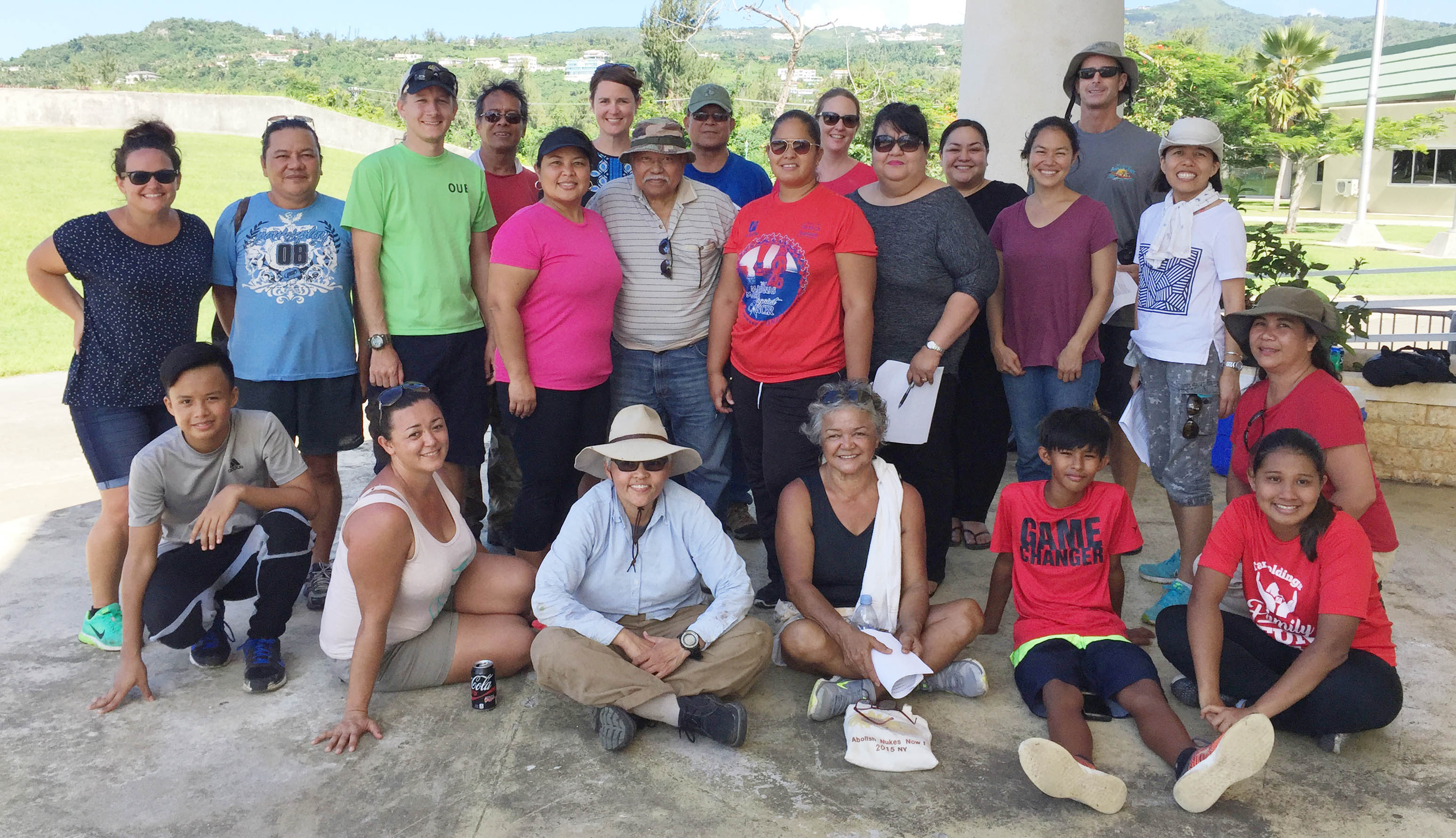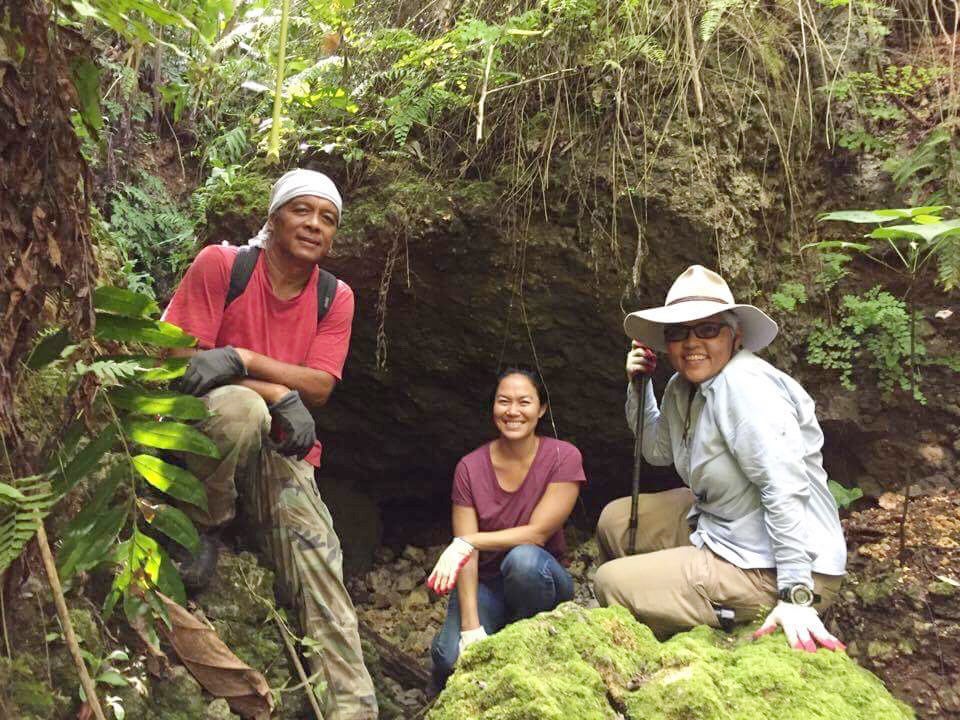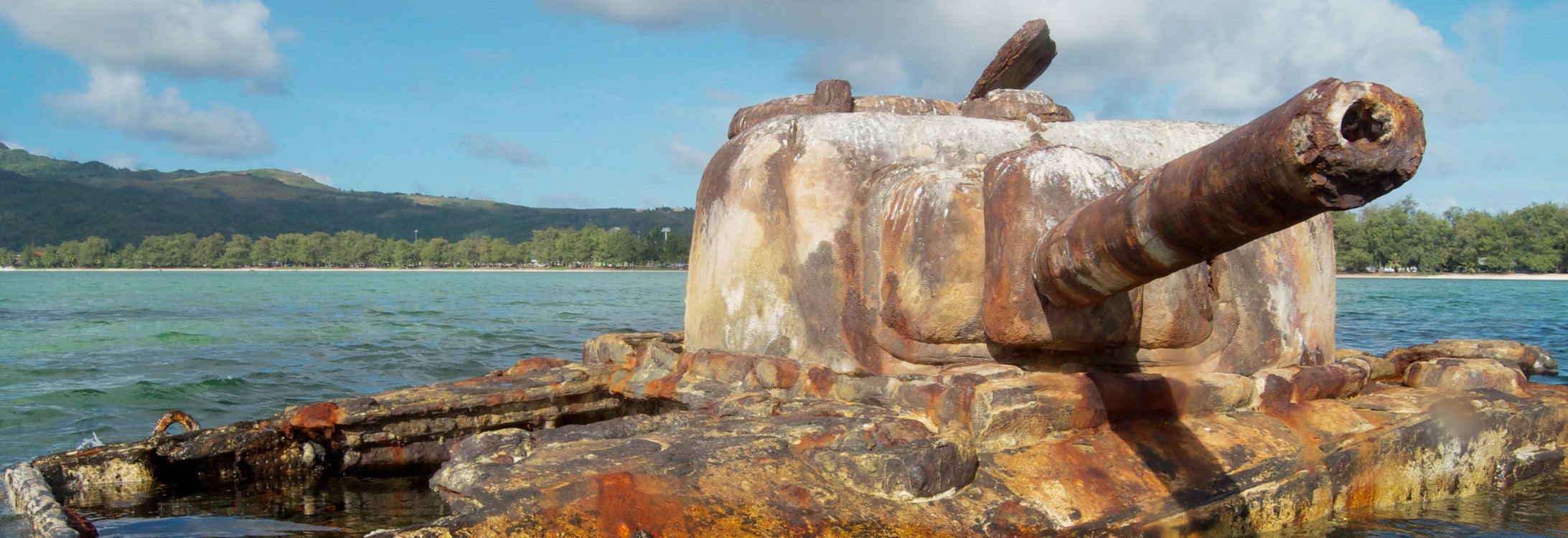BACK TO SAIPAN
ECU educators return to island to explore historical landmarks
More than 24 hours of air travel, the International Date Line and thousands of miles of open ocean separate Greenville from Saipan, but next summer a pair of East Carolina University researchers will call the island home thanks to a grant from the National Endowment for the Humanities.
“Saipan’s Land and Sea: Battle Scars and Sites of Resilience” is directed by College of Education Associate Professor Anne Ticknor, with Thomas Harriot College of Arts and Sciences Associate Professor Jennifer McKinnon serving as co-primary investigator.
The $169,997 award allows Ticknor and McKinnon to host two one-week workshops for 72 K-12 educators on the history of military conflicts in Saipan. The program will host teachers from the island, as well as the surrounding region and the U.S. West Coast.

Ticknor and McKinnon are no strangers to Saipain. The researchers led a program on the island in 2018 that included local participants.
The project is part of the NEH’s Landmarks of American History and Culture program and will focus on historical relics of war and conflict.
“There are places in the world that you can visit and feel the history of conflict,” McKinnon said. “Saipan is one of those places. The battles that have shaped the island are very tangible. Whether it’s tanks rusting on the shore or bunkers littered across the landscape, the island is brimming with monuments to those who lost their lives.
“War is a universal experience, and our students today haven’t experienced a world where we’re not at war,” she said. “We hope this educational opportunity allows teachers to better connect with their students by making history ‘real.’”
The interdisciplinary project will take participants from the classroom and into Saipan’s jungle, beach and mountain environments. Ticknor said that the group would be out in the field learning the island’s history from local guides.
“Every day we’ll be out visiting these landmarks and we’ll have a chance to interact with the history of the island,” Ticknor said. “You get a real closeness to the conflict when you see the remnants of war in person.
“They’re going to be able to use these concrete experiences to better inform their teaching methods and, we believe, improve the way they connect to their students. When you have these experiences, it alters the way you read and interpret texts; it changes the way you teach. We’ll also share some new educational techniques using digital media, so they’ll be able to come away with new lessons and content to carry back to their classrooms.”
Saipan has a long, bloody colonial history spanning more than 400 years. The island was formally colonized by Spain in the mid-1600s and much of indigenous population was relocated to nearby Guam a half-century later.
The island was sold to Germany in 1899 before being captured by Japan during World War I. Saipan became an important location for sugar production, and the Japanese made it a critical buffer between the mainland and the rest of the world. During this time the island’s population ballooned to 29,000, with just under 4,000 indigenous Chamorros and Carolinian Islanders.
The island was the stage for the Battle of Saipan during World War II, a significant conflict in which more than 1,000 Japanese civilians committed suicide by jumping off the island’s Banazai Cliff. The cliff will be one of the landmarks visited during the program, as well as other less conspicuous locations.

The NEH-funded program includes instruction from community members, ranging from a high school principal to an archaeologist and an explorer who documents caves on the island.
“When we talk about landmarks, we usually mean big sites that everyone understands and knows are incredibly important,” McKinnon said. “This project will expand the notion of what a landmark is to include personal and family sites. This includes the jungle caves that families hid in during WWII and other areas that hold local significance. These places are incredibly important to the region, but may not be as well known to educators.”
Ticknor said that local educators and historians will play a key role in connecting those landmarks to literature and oral histories explored by project participants. Six community members will play key roles on the project, ranging from a high school principal to an archaeologist and an explorer who documents caves on the island.
“We looked at our high school textbooks housed in the Teaching and Resource Center in Joyner Library, and we found just one textbook that mentioned Saipan,” Ticknor said. “The island’s past plays an important role in history and it should be shared. What better way to teach others to share that history than by connecting with local community members, learning from them, and using our resources to connect others through literature and additional teaching resources.”
While exploring Saipan’s history may be a novel experience for some of the program’s educators, it’s becoming a common occurrence for Ticknor and McKinnon. The trip will be Ticknor’s fourth since 2017 when she teamed up with McKinnon and Film Studies Associate Professor Anna Froula for a separate NEH-funded project.
“You can often go places and not get invited back,” McKinnon said. “The fact that the locals we’ve connected with on the island wanted us to write another grant means what we’re doing is useful. The island has a history of ‘experts’ flying in and flying out. They come in, dump their knowledge — which may not even be useful or wanted — and then leave. What we’re doing is a true community collaboration.”
Even though their job next summer includes sharing what they know with others, Ticknor and McKinnon said the program’s participants won’t be the only ones picking up new teaching techniques.
“Humanities grants are very important, especially those with an interdisciplinary nature,” Ticknor said. “We learn how to work as a team and how to best utilize project members based on their content expertise and skillsets. We all take something away from one another when we work together, and it makes us better professors for our university, our students and our colleagues.”
Read more about ECU’s past work in Saipan, including the team’s past research work and the university’s partnership with the Task Force Dagger Foundation.
